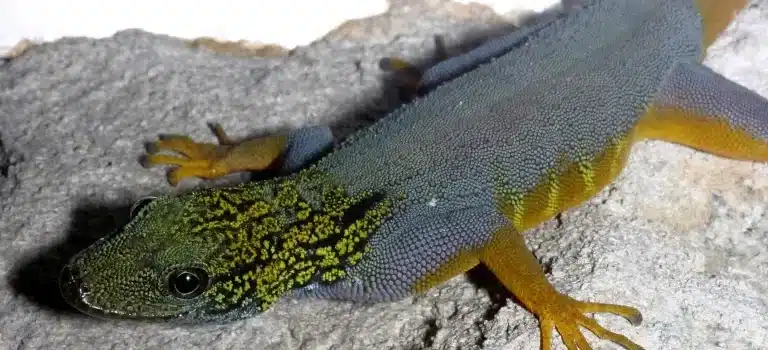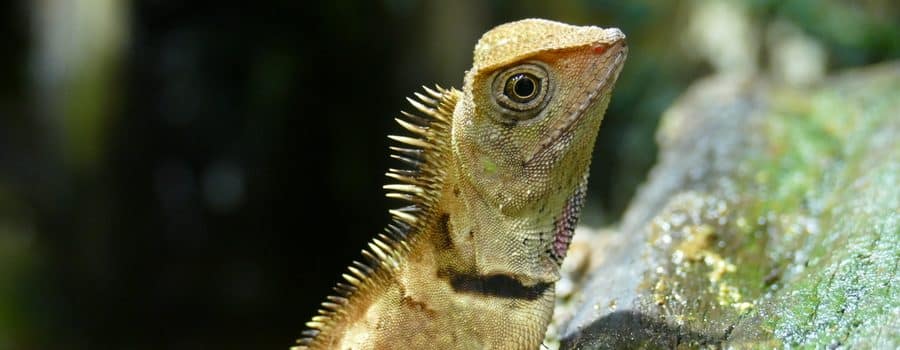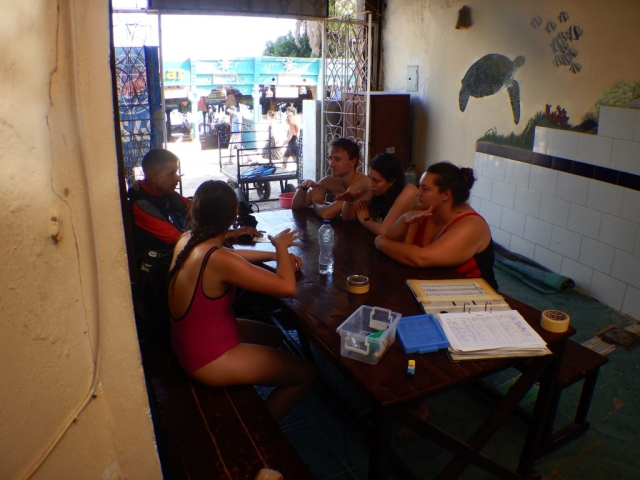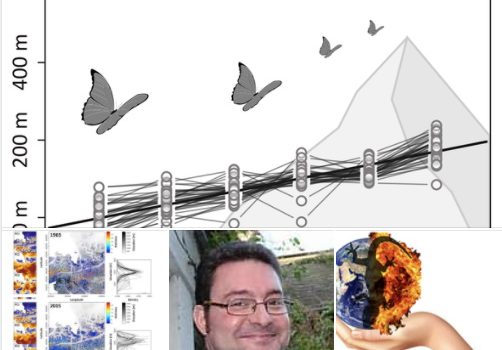PhD defense of Wei Cheng Tan
Wei Cheng Tan has just very successfully defended his PhD thesis!
“Effects of habitat fragmentation on herpetofauna in Southeast Asia: From broad-scale responses to fine-scale responses in an ever-changing anthropogenic landscape“
Abstract
Habitat loss and fragmentation are undoubtedly significant drivers of biodiversity loss worldwide, with Southeast Asia being a hotspot of biodiversity and facing numerous anthropogenic pressures. However, the impacts of habitat fragmentation on biodiversity are still not fully understood, and further research is required to determine the responses of different taxa to this threat. Reptiles and amphibians (herpetofauna), in particular, are among the most threatened groups globally, with Southeast Asia being home to a high diversity of species and facing imminent threats from habitat loss and fragmentation. By combining bibliographic analyses and macroecological methods, this thesis aims to contribute to the knowledge on the current global state of habitat fragmentation research in herpetofauna and the broad and fine-scale responses of Southeast Asian reptiles to various forms of habitat fragmentation.
Chapter 1: This chapter introduces the concepts of habitat fragmentation and its effects on biodiversity. It accentuates the importance of Southeast Asia for habitat fragmentation research due to its complex geological history, high species richness, and rapid habitat loss. It also describes the plight of the Southeast Asian herpetofauna, focusing on their vulnerability to habitat loss and fragmentation in freshwater environments. Lastly, the chapter gives a brief overview of the methodologies and approaches used throughout this thesis.
Chapter 2: Recent decades have seen a surge of funding, published papers, and citations in the field as threats to biodiversity continue to rise. However, how research directions and agendas are evolving in this field remains poorly understood. This chapter presents a global review of past and current state of research on habitat fragmentation for reptiles and amphibians. Here, I systematically reviewed published literatures on habitat fragmentation effects on reptiles and amphibians from 1990 to 2020, with the aim of identifying geographical and taxonomical trends on the various forms of habitat fragmentation, and the sampling methods and response variables commonly employed to identify them. The study reveals several patterns and biases in research efforts, such as the concentration of studies in wealthy and English-speaking countries, and the under-representation of certain regions (e.g. Africa and Southeast Asia) and taxa (e.g. caecilians, fossorial reptiles). It specifically calls for increased attention to these taxa in Southeast Asia, which have received less scientific scrutiny compared to other regions of the world. Moreover, there is a shift in research agendas toward studies utilizing technological advancements including genetic and spatial data analyses. These findings suggest important associations between sampling methods and prevalent response variables but not with the forms of habitat fragmentation. This review suggests the need for more studies on genetic and spatial patterns, with emphasis on underrepresented reptile and amphibian taxa. This chapter sets the context for the subsequent chapters by highlighting the existing gaps in the field.
Chapter 3: This chapter uses species distribution models to investigate the broad-scale responses of threatened semi-aquatic or freshwater reptiles to current and future climatic and anthropogenic conditions. More specifically, it examines the habitat suitability of endangered freshwater crocodiles and turtles and assesses the effectiveness of existing protected areas in conserving these species across Southeast and South Asia (in the Indomalayan realm). Species distribution models are highly successful in predicting potentially suitable habitats of a species based on their environmental niche and presence records. The results suggest that protected areas may be insufficient in the face of current anthropogenic pressures and future climate change. The chapter emphasizes the importance of considering both climatic and non-climatic factors in species distribution models. The results of this chapter are essential for conservation planning and management, as they provide insights into important areas and reserves that should be prioritized.
Chapter 4: This chapter zooms in from a broad-scale to fine-scale view of species response to habitat change, focusing on the effect of logging, which affects more than half of the remaining tropical forests in Southeast Asia. Logging has direct and indirect impacts on freshwater turtle habitats, such as altering stream hydrology and increasing sedimentation. In this chapter, I examine the fine-scale responses of two freshwater turtle species to Reduced Impact Logging, a sustainable forestry method, in Deramakot reserve in Sabah, Malaysian Borneo. I use occupancy models to estimate the probability of species detectability and habitat associations across a post-harvest recovery gradient (1 –21 years since logging), using presence and absence data. Results for the non-threatened soft-shelled turtle, Dogania subplana are inconclusive. However, the study reveals a significant negative association between monthly rainfall and the detection of the threatened hard-shelled turtle, Notochelys platynota. The occupancy probability of N. platynota is positively associated with greater distance from logging roads. Nevertheless, both species appear to be relatively common throughout the reserve. The chapter suggests that forests managed sustainably, i.e. using Reduced Impact Logging could serve as conservation areas for imperiled freshwater turtle species in the region.
Lastly, chapter 5 summarizes the results of this thesis and its implications and contributions to the field. It also considers the limitations of the approaches and methodologies used. Overall, this thesis emphasizes the urgent need for more research on the effects of habitat fragmentation on herpetofauna in Southeast Asia and the importance of incorporating both broad and fine-scale data. This work is a significant step towards providing easily reproducible studies to be used as a baseline to ensure the long-term survival of these vulnerable species in Southeast Asia.
These papers are already published and included in the thesis:
Harrer, S., P. Ginal, W. C. Tan, J. W. Binaday, A. C. Diesmos, R. Manalo, T. Ziegler, and D. Rödder. 2024. Disappearing archosaurs – an assessment of established protected areas in the Philippines to save the Critically Endangered, endemic Philippine Crocodile (Crocodylus mindorensis). Salamandra 60: 29-41. (PDF)
Mobaraki, A., M. Erfani, E. Abtin, J. C. Brito, W. C. Tan, T. Ziegler, and D. Rödder. 2023. Last chance to see? Iran and India as strongholds for the Marsh crocodile (Crocodylus palustris). Salamandra 59: 327–335. (PDF)
Tan, W. C., A. Herrel, and D. Rödder. 2023. A global analysis of habitat fragmentation research in reptiles and amphibians: What have we done so far? Biodiversity and Conservation 32: 439–468. (PDF)
Tan, W. C., P. Ginal, A. G. J. Rhodin, J. B. Iverson, and D. Rödder. 2022. A present and future assessment of the effectiveness of existing reserves in preserving three critically endangered freshwater turtles in Southeast Asia and South Asia. Frontiers of Biogeography 2021, 14.1, e50928. (PDF)

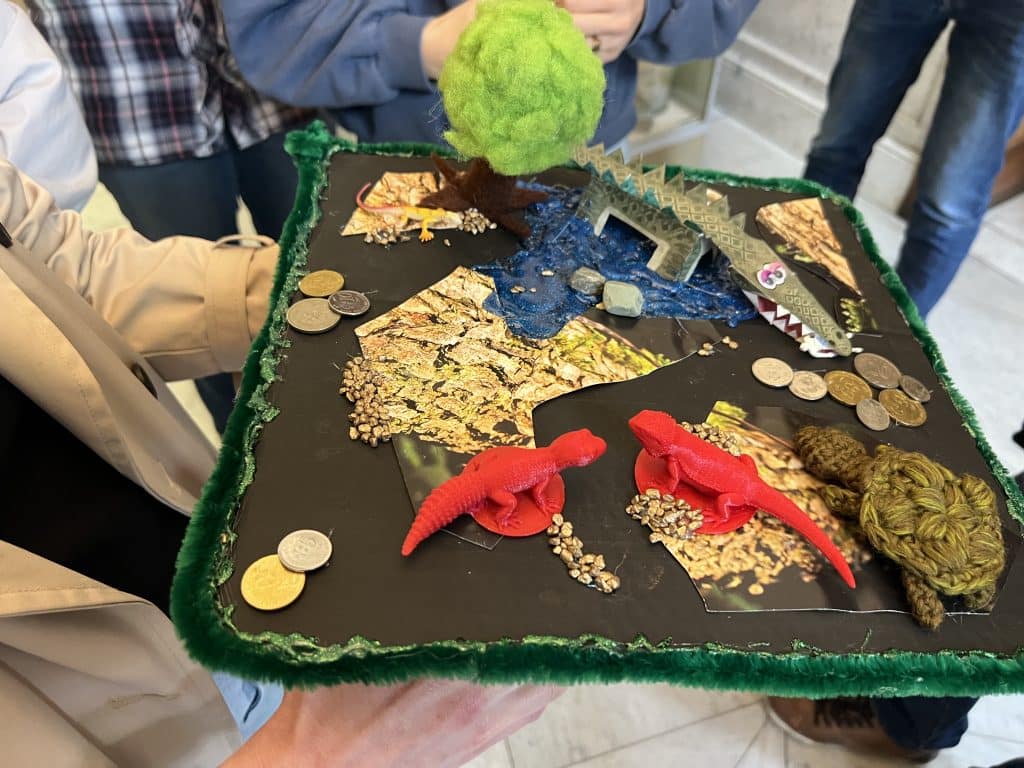

Breeding programs initiated in Vietnam to help turtle species threatened by extinction
Conservationists have initiated breeding programs in Vietnam to recover spotted softshell turtle populations threatened by overconsumption and habitat loss. Based on a literature study, field surveys across Vietnam, and genetic screenings of collected samples, researchers estimated the range and conservation status of Pelodiscus variegatus, the spotted softshell turtle. The data were then used to model the species’ potential range in Vietnam.
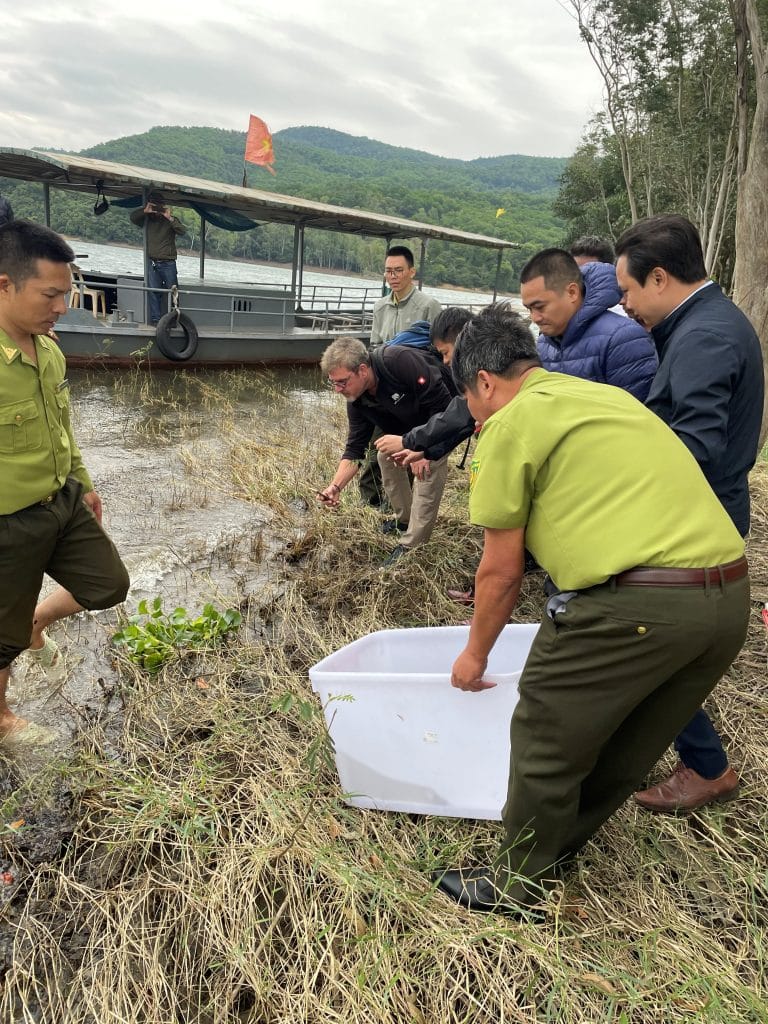
Conservation breeding programs are intended to support the protection of the endangered spotted softshell turtle. In order to find out more about their occurrence on the Indochinese mainland, researchers have now published a study on habitat suitability and distribution patterns in the journal Nature Conservation. The study combines molecular analyses and species distribution modeling to identify priority conservation areas.
The study was published with the participation of the Vietnam Academy of Science and Technology (VAST), the Vietnam National University Hanoi and the Asian Turtle Program (Vietnam), as well as the Cologne Zoo and the Leibniz Institute for the Analysis of Biodiversity Change (LIB).
The spotted softshell turtle (Pelodiscus variegatus) has been known from Vietnam and Hainan Island, China, since 2019. It is considered a delicacy in these countries. In China alone, hundreds of millions of turtles are traded every year, making them the most consumed turtles in the world. Habitat loss and degradation, competition with non-native turtle species and habitat pollution are further reasons for the species’ decline.
Although several protected areas in Vietnam appear to offer suitable habitats for this turtle species, the researchers were unable to detect populations in any of the areas studied. “We therefore assume that the spotted softshell turtle is particularly threatened with extinction,” emphasizes PD Dr. Dennis Rödder, Curator of Herpetology at the Museum Koenig Bonn of the LIB.
The results of the ecological modeling show that Pelodiscus variegatus may also occur in Laos. “However, on the border between Vietnam and Laos and in wetlands, we were only able to find patchy evidence of it,” says Rödder, describing the modeling.
Vietnamese conservationists, in collaboration with Prof. Dr. Thomas Ziegler from Cologne Zoo, have launched conservation breeding programs in Vietnam to save populations of the spotted softshell turtle that are threatened by overconsumption, habitat loss and mixing with invasive species.
The researchers calculated the distribution range and conservation status of the spotted softshell turtle based on a literature review, field studies across Vietnam and genetic studies of collected samples. The data was used to model the potential range of the species in Vietnam.
To restore the species’ natural populations, the Institute of Ecology and Biological Resources (IEBR, VAST) in Vietnam and Cologne Zoo have launched an in-country conservation breeding program. By the end of 2023, 50 young and healthy turtles had already been released into the wild in a location with a suitable climate and habitat in northern Vietnam.
Based on the results of the study, it is hoped that further individuals can be reintroduced into protected areas in north-central Vietnam, the distribution center of the spotted softshell turtle. In this way, the consortium hopes to stem the decline of the species and make a further contribution to the global “Reverse the Red” movement – by applying the IUCN’s “One Plan Approach to Conservation”, in which all available expertise works together to optimize species protection.
Soft-shelled turtles of the genus Pelodiscus are widespread from south-eastern Siberia to China and Vietnam. However, human transportation and breeding activities have extended their range to Indonesia, northern Australia, western Europe, North America, Hawaii and Mauritius.
Traditionally, this genus was considered monotypic, i.e. with only one recognized species, the Chinese softshell turtle (Pelodiscus sinensis). However, recent research has shown that the genus is much more diverse and at least seven species are known to science, which consequently have smaller distributions and are more threatened.
“Due to their morphological similarity, expanding settlements and agricultural activities, overexploitation and aquatic lifestyle, it is often difficult to study them in their natural habitat to better understand their distribution as well as their population and conservation status,” says Rödder. “Unfortunately, only part of the species’ potential range is protected so far and there is no known evidence from protected areas, which underlines the need for extended or even new protected areas.”
Original study:
Le MD, Rödder D, Nguyen TT, The Pham C, Nguyen TQ, Ong AV, McCormack TEM, Nguyen TT, Le MH, Ngo HT, Ziegler T (2024) Climatic niche modelling and genetic analyses highlight conservation priorities for the Spotted Softshell Turtle (Pelodiscus variegatus). Nature Conservation 55: 67-82. (PDF)
PhD defense of Philipp Ginal
Philipp Ginal has just very successfully defended his PhD thesis!
“Invasion biology of amphibians and reptiles: From observations to predictive spatial models”
His thesis entitled “Invasion biology of amphibians and reptiles: From observations to predictive spatial models” comprises six publications. Overall, his thesis is broadly folded, and comprises several target species across different taxonomic groups (i.e., anurans, urodeles, squamates), scales (i.e., local, regional, macro-ecological landscapes), and methodological approaches (i.e., population size estimation, connectivity modeling, correlative and mechanistic species distribution modeling, mechanistic quantification of activity time budgets). The focus of my thesis relies on the methodological approaches and therefore, the red line here starts with relatively simple models and ends with a novel, complex mechanistic approach.
Furthermore, three publications consider the African Clawed Frog, Xenopus laevis (Daudin, 1802), which is among the most invasive amphibian species in the world.
Two further publications focus on the Oriental Garden Lizard, Calotes versicolor (Daudin, 1802) complex, a wide-spread but neglected invader with potential negative impacts, and the Italian Cave Salamander, Speleomantes italicus (Dunn, 1923), which is non-native but locally very restricted with no known negative impacts yet. Another publication considers the invasive fungal disease Batrachochytrium salamandrivorans Martel et al. 2013 (Bsal), which has substantial negative impacts on macro-ecological scales, and one of its host species, the European Fire Salamander, Salamandra salamandra (Linnaeus, 1758).
These papers are already published and included in the thesis:
Ginal, P., N. Kruger, C. Wagener, L. Araspin, M. Mokhatla, J. Secondi, A. Herrel, J. Measey, and D. Rödder. 2023. More time for aliens? Performance shifts lead to increased activity time budgets propelling invasion success. Biological Invasions 25: 267–283. (PDF)
Ginal, P., W. C. Tan, and D. Rödder. 2022. Invasive risk assessment and expansion of the realized niche of the Calotes versicolor species complex (Daudin, 1802). Frontiers of Biogeography 14.3, e54299. (PDF)
Ginal, P., M. Mokhatla, N. Kruger, J. Secondi, A. Herrel, J. Measey, and D. Rödder. 2021. Ecophysiological models for global invaders: Is Europe a big playground for the African clawed frog? Journal of Experimental Zoology – Part A: Ecological and Integrative Physiology 2020: 158-172. (PDF)
Ginal, P. C.-H. Loske, T. Hörren and D. Rödder. 2021. Cave salamanders (Speleomantes spp.) in Germany: tentative species identification, estimation of population size and first insights into an introduced salamander. Herpetology Notes 14: 815-822. (PDF)
Ginal, P., F. D. Moreira, R. Marques, R. Rebelo, and D. Rödder. 2021. Predicting terrestrial dispersal corridors of the invasive African clawed frog Xenopus laevis in Portugal. NeoBiota 64: 103–118. (PDF)
Assessment of the threat status of reptile species from Vietnam – Implementation of the One Plan Approach to Conservation
Just published:
Subsequent to a recently published study in Nature Conservation highlighting the gaps in the protection of Vietnam´s amphibians, Thomas Ziegler and his international cooperation team now present another threat analysis, this time dealing with a detailed assessment of Vietnam’s reptile fauna to uncover gaps in conservation.
Globally, reptiles are considered a group of special conservation concern, as they play an important role in almost all ecosystems and often have relatively small distribution ranges, making them especially vulnerable to anthropogenic threats.
As Vietnam’s herpetofauna is among the richest in the world and particularly threatened due to habitat loss and overharvesting for traditional medicine, pet trade, and food, it is critical to assess their conservation status.
The publication was based on the bachelor thesis of Lilli Stenger conducted at the University of Cologne, Germany. “Being able to focus my bachelor thesis on the threat status of the reptiles extant in Vietnam was a great opportunity and I am proud of this contribution,” says Lilli Stenger about her thesis project performed in Ziegler’s lab at the Cologne Zoo, Germany.
The scientists identified 484 reptile species known from Vietnam, noting that the number is likely to go up, as the country is regarded as a top biodiversity hotspot, and the rate of new reptile species discoveries remains high. As many as 159 (33%) reptile species are endemic to the country, with more than half of them (55%) reported exclusively from only a single locality, making them especially vulnerable to extinction.
“With 131 subregional endemic species and 88 of them restricted to their type locality, the country needs to establish additional local conservation areas to safeguard the microendemic species.” explains one of the authors of the present study, Prof. Dr. Truong Quang Nguyen of the Institute of Ecology and Biological Resources (IEBR), Hanoi.
According to the IUCN Red List of threatened species, 74 of the 484 species recorded from Vietnam are classified as threatened with extinction, including 34 endemic species. Most of threatened reptiles are lizards, followed by snakes and turtles, with 100% of the species in Vietnam listed as Vulnerable or higher. For more than half of Vietnam’s endemic reptiles (85 out of 159), the IUCN Red List status is either missing or outdated and further research is imperative for these species, the researchers say.
According to species richness maps, the Central Annamites region in central Vietnam harbors the highest endemic species diversity (32 species) as well as highest subregional endemic species diversity (21 species), which highlights it as a site of particular importance for reptile conservation.
“Integrating microhabitat level species richness maps and spatial patterns of local endemism rates is essential to identify priority areas for further conservation measures as habitat loss and increased anthropogenic pressures in these areas would adversely affect a higher number of species than it would in other areas” explains Associate Professor Dr. Dennis Rödder, curator of herpetology of the Leibniz Institute for the Analysis of Biodiversity Change, Museum Koenig in Bonn, Germany.
Alarmingly, a protected area analysis showed that 53 of the 159 endemic species (33.2%) including 17 threatened species, have been recorded exclusively from unprotected areas, such as the Critically Endangered Gia Lai Bent-toed Gecko or Endangered Peter’s Butterfly Lizard and Psychedelic Rock Gecko.
“For these species as well as for the 28 species considered Data Deficient (DD) or those whose conservation statuses have not been evaluated (NE), population assessments should be undertaken as quickly as possible to design appropriate conservation measures in due time,” says co-author Dr. Cuong The Pham from IEBR.
Successful protection must also include the listing of the most threatened endemic species in national and international legislations to provide them with additional support, as many threatened and/or endemic species are still missing from those legislations. The Vietnamese-German team already could achieve first promising results such as the inclusion of some threatened Vietnamese lizard species in the appendices of the Convention on International Trade in Endangered Species of Wild Fauna and Flora (CITES), but more of such advances are still needed.
According to data from Species360’s Zoological Information Management System (ZIMS), 109 (22.5%) of the total 484 species reported to occur in Vietnam are represented in global zoos, with the highest diversity concentrated in facilities in Europe and North America. However, only 6.3% (10 out of 159) of the Vietnamese endemic species are maintained ex situ, thus it is crucial that zoos consider shifting their focus to commit more resources to threatened endemic species.
In order to successfully protect threatened species and meet the objectives of the One Plan Approach of IUCN’s Conservation Planning Specialist Group (CPSG), which refers to the interaction of “in situ” (on site) and “ex situ” (in zoos and stations) measures involving various expertise and thus enabling optimized, contemporary species conservation, ex situ populations must be included in global conservation planning. “This is intended to support the in situ conservation efforts and to buy time as well as to save species from going extinct, as ex situ populations still are available for reintroductions” says co-author Anna Rauhaus, section keeper in Cologne Zoo’s Terrarium division, where 36 species of herpetofauna from Vietnam are held, 19 of them threatened and 25 species of them successfully bred, and most of them connected with in situ conservation measures in Vietnam. .
“Two most endangered turtle species in Vietnam and in the world, the Vietnamese pond turtle (Mauremys annamensis) and the Yangtze giant softshell turtle (Rafetus swinhoei), illustrate the significance of ex situ conservation measures. Both of the species are also not known from any protected area. While Mauremys annamensis is likely to be extinct in the wild, Rafetus swinhoei is on the brink of extinction. Whereas ex situ conservation programs have been implemented in time for Mauremys annamensis with a high number of individuals being kept and bred in zoos and stations, unfortunately, no such initiative has been established for Rafetus swinhoei”, Prof. Dr. Minh Le from the Hanoi National University emphasizes.
“In this regard, modern zoos, as well as local facilities, can play a crucial role in not only conducting or financially supporting in situ conservation projects, but also by protecting species from extinction through maintaining ex situ assurance colonies to reinforce in situ conservation programs, once needed. The Cologne Zoo in Germany and its partner, the Melinh Biodiversity Station in Vietnam, have already successfully implemented a number of conservation breeding initiatives for highly threatened species such as Vietnamese crocodile lizards or Tiger geckos “ explains Prof. Dr. Thomas Ziegler, Vietnam conservation team member and coordinator from Cologne Zoo, Germany.
The present study aims to provide a baseline to authorities, conservationists, rescue centers, and zoos, so that they can follow up with appropriate conservation measures for endangered Vietnamese reptiles.
A global analysis of habitat fragmentation research in reptiles and amphibians: what have we done so far?
Our new review on habitat fragmentation research in amphibians and reptiles is just published in Biodiversity and Conservation early online! My PhD student Nicholas Tan did a great job analysing the global patterns of research agendas based on more than 1400 papers, comparing methodological and taxonomic biases across geographical regions. The full text is available here:
Habitat change and fragmentation are the primary causes of biodiversity loss worldwide. Recent decades have seen a surge of funding, published papers and citations in the field as these threats to biodiversity continue to rise. However, how research directions and agenda are evolving in this field remains poorly understood. In this study, we examined the current state of research on habitat fragmentation (due to agriculture, logging, fragmentation, urbanisation and roads) pertaining to two of the most threatened vertebrate groups, reptiles and amphibians. We did so by conducting a global scale review of geographical and taxonomical trends on the habitat fragmentation types, associated sampling methods and response variables. Our analyses revealed a number of biases with existing research efforts being focused on three continents (e.g., North America, Europe and Australia) and a surplus of studies measuring species richness and abundance. However, we saw a shift in research agenda towards studies utilising technological advancements including genetic and spatial data analyses. Our findings suggest important associations between sampling methods and prevalent response variables but not with the types of habitat fragmentation. These research agendas are found homogeneously distributed across all continents. Increased research investment with appropriate sampling techniques is crucial in biodiversity hotpots such as the tropics where unprecedented threats to herpetofauna exist.


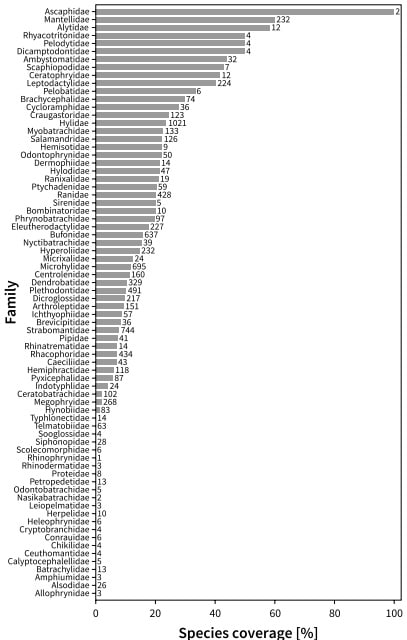

Spatiotemporal habitat use and impacts of habitat fragmentation on Lizards
My group just published two new papers on the effects of habitat loss on tick load in the eastern green lizard Lacerta viridis and spatiotemporal patterns of habitat use by the sand lizard Lacerta agilis. Both studies required numerous hours of fieldwork and many students were involved. Special thanks to all of them for their enthusiasm!
The distribution and occurrence of a species in its habitat are inevitably linked to its ecology. To successfully monitor and protect species, it is important to investigate which species-specific factors influence its interactions with the environment. In this study, we focus on patterns in habitat use of the Sand Lizard (Lacerta agilis). Differences in seasonal, as well as sex and size class-dependent habitat use, have been reported from the edges of this species’ range. To verify such trends in the core area of its distribution, we analyzed the habitat factors weather, microclimate, microhabitat structures, and time dependence, which may have an impact on the use of space of the Sand Lizard. Using generalized linear models, hypervolumes, density estimations, and Chi-squared tests, we found that the movement patterns of individuals can neither be described by time differences, climatic conditions, or habitat composition nor do they show habitat- or weather-related differences of movement between sexes or size. Here we demonstrate that in the case of a population from the core of this species’ distribution area in the Dellbrücker Heide (Germany), habitat use is solely influenced to a low degree by differences related to the ontogeny of Sand Lizards and does not depend on any of the other evaluated factors. These results are in enormous contrast to findings in populations from the periphery of their distribution, i.e., the United Kingdom, Latvia, Romania, Bulgaria, and the Pyrenees. This implies that seasonal habitat shifts are more extreme at the edges of the range of L. agilis, serving to compensate deteriorating habitat conditions in the periphery.

Habitat loss can increase the susceptibility of individuals to parasitic infections, and hence, parasite load can serve as an early warning indicator of stress before the persistence of a population becomes threatened. In this study, we tested the effects of patch characteristics, isolation and landscape composition resulting from habitat loss on the tick load of individuals from central populations of the Eastern Green Lizard Lacerta viridis. We identified the spatial scale at which each landscape composition parameter has the strongest effect and evaluated its effects at this scale. Additionally, we tested the relationships between tick load and population density and body condition (BC) to understand possible mechanisms that determine tick loads in populations. We found that tick load was not affected by host population density. BC was not found to be affected by tick load, but BC did have a negative effect on lizards’ tick loads. The proportion of habitat and cropland in the landscape and patch size had positive effects on tick loads, whereas the proportion of urbanized areas, isolation and perimeter/area ratio had negative effects. We discuss our finding in the context of how the landscape can affect tick populations and other potential hosts. We conclude that tick load can be a suitable early warning indicator of negative effects of habitat loss, reflecting the susceptibility of lizards to infestation. We suggest that this indicator be included in monitoring programs aiming at evaluating the status of populations of L. viridis in modified landscapes, and recommend that conservation measures be focused on the protection of habitat at broader scales to compensate negative effects of cropland and urbanized areas occurring at small scales.
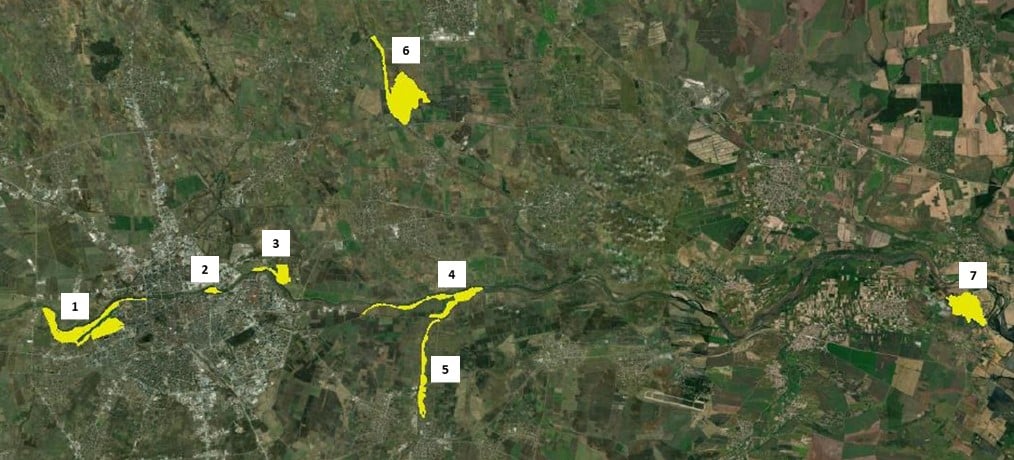
Egypt Excursion 2022
We are just back from our field trip to Egypt. After three days of a preparatory seminar, the 18 students and I had the opportunity to explore marine life during numerous snorkeling and diving hours. We discovered hundreds of species and are still determining based on photos and videos. Time rushed way too fast, here are some impressions from the trip:
21st European Conference of Herpetology in Belgrad, Serbia
Our group joined the 21st European Conference of Herpetology in Belgrad, Serbia, where our Herpetologists from the LIB, Musem Koenig were very active. We presented five talks and posters! The conference was awesome and the organizers did a very good job. Thank you very much! Here are some impressions and the abstracts.


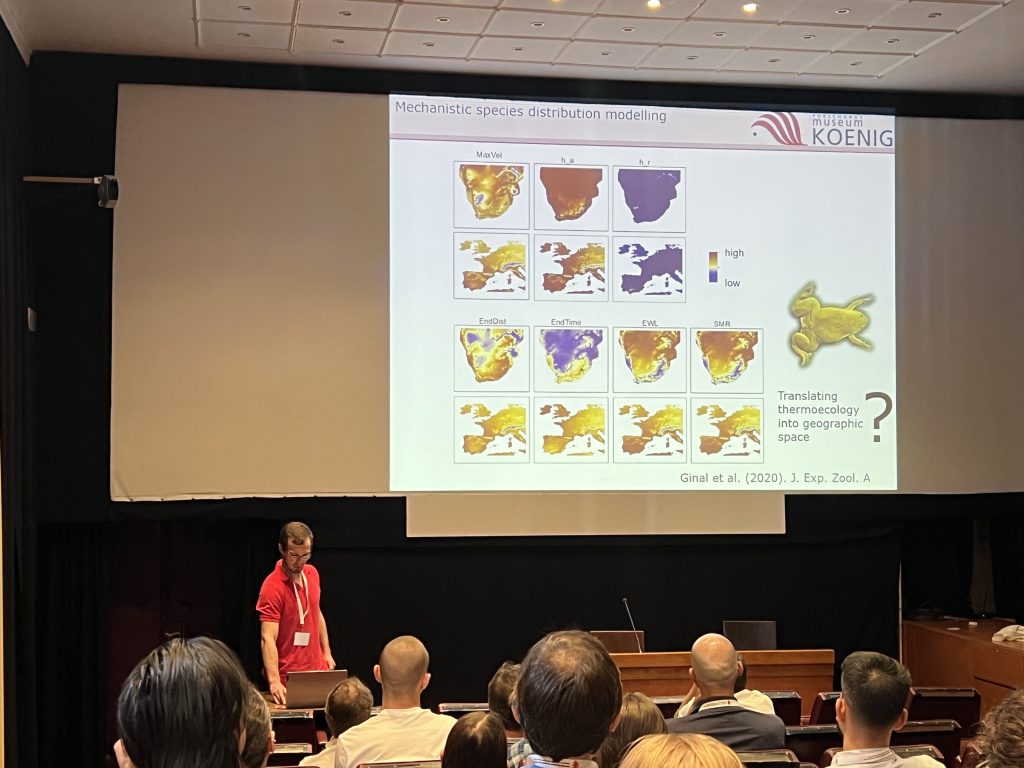
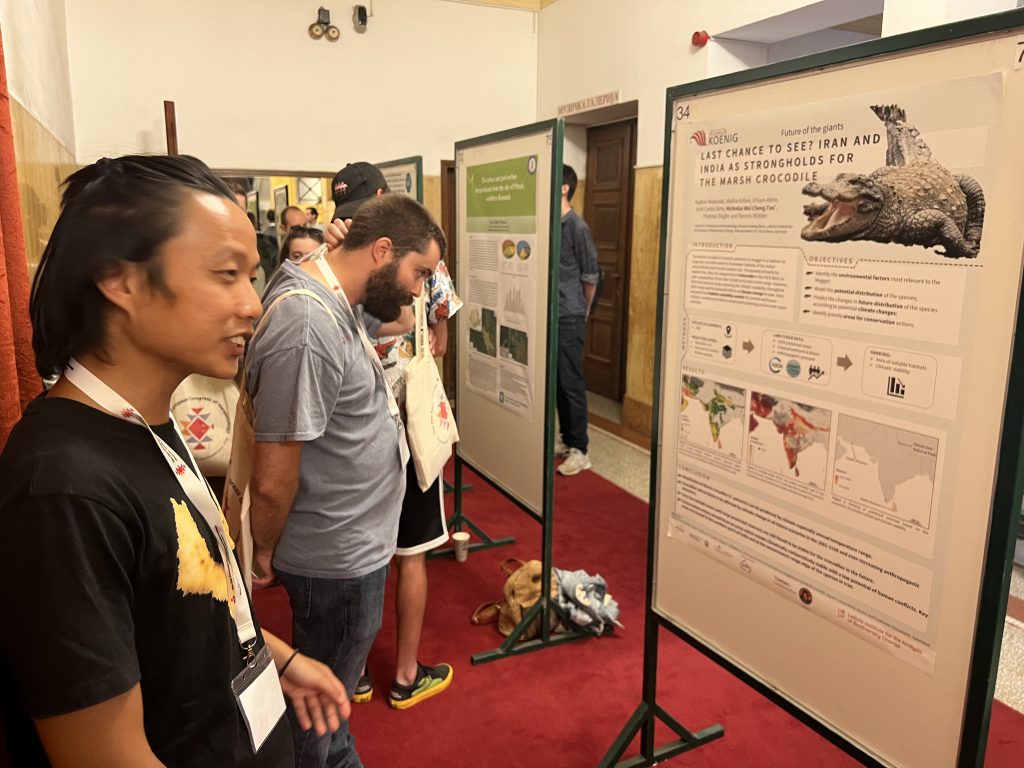
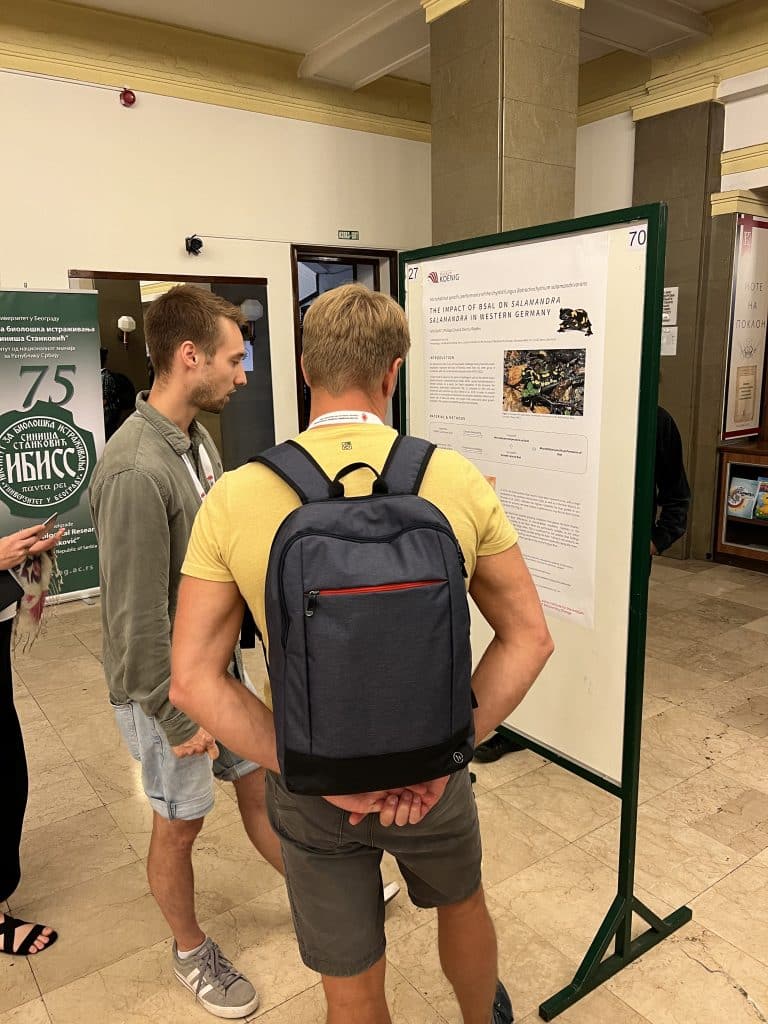








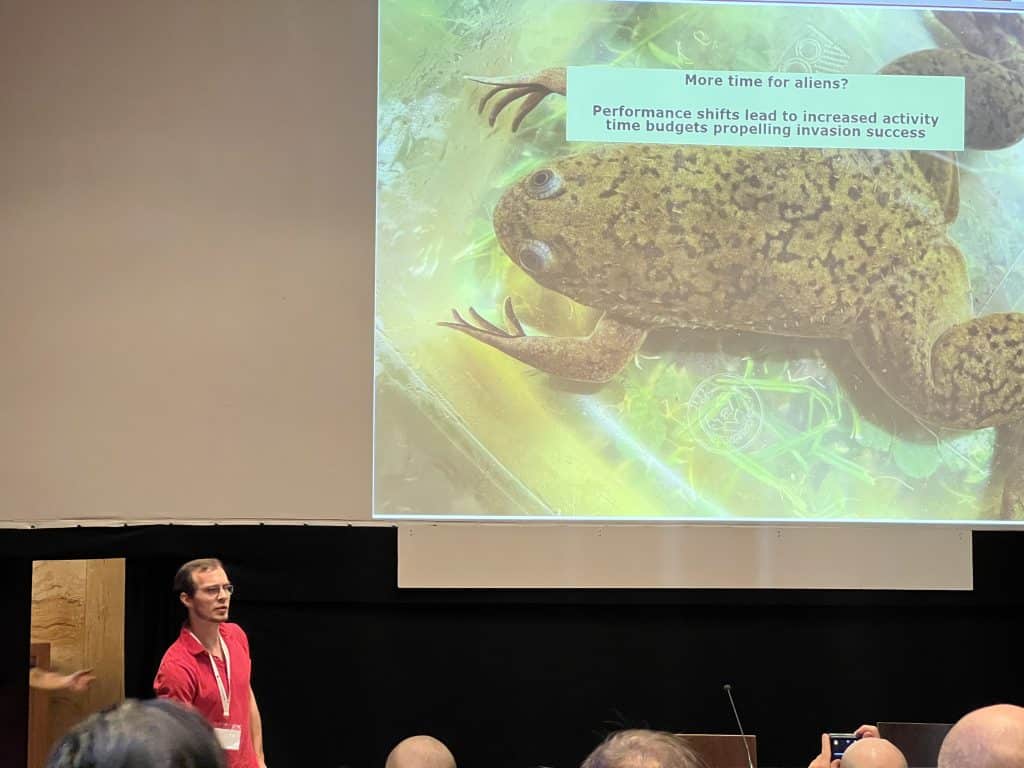
Oral presentation
More time for aliens? Performance shifts lead to increased activity time budgets propelling invasion success
Ginal P.1,*, Kruger N.2,3, Wagener C.2,4, Araspin L.2,5, Mokhatla M.2,6, Secondi J.3,7,
Herrel A.8, Measey J.2, Rödder, D.1
1Zoologisches Forschungsmuseum Alexander Koenig (LIB), Bonn, Germany
2Centre for Invasion Biology, Department of Botany and Zoology, Stellenbosch University, Stellenbosch, South Africa
3Univ. Lyon, Université Claude Bernard Lyon 1, CNRS, ENTPE, UMR 5023 LEHNA, Villeurbanne, France
4Department of Zoology, University of Oxford, UK
5UMR 7179 C.N.RS/M.N.H.N., Département Adaptations du Vivant, Bâtiment d’Anatomie Comparée, Paris, France
6Department of Zoology and Entomology, University of Pretoria, Private Bag x20, Pretoria, Rondevlei Scientific Services, Garden Route National Park, South African National Parks, Sedgefield, South Africa
7Faculté des Sciences, Université d’’Angers, Angers, France
8UMR 7179 C.N.R.S/M.N.H.N., Département Adaptations du Vivant, Bâtim’ent d’Anatomie Comparée, Paris, France
*Corresponding author (e-mail): Philipp Ginal (philipp.ginal@gmx.de)
In the Grinnellian niche concept, the realized niche and potential distribution is characterized as an interplay among the fundamental niche, biotic interactions and geographic accessibility. Climate is one of the main drivers for this concept and is essential to predict a taxon’s distribution. Mechanistic approaches can be useful tools, which use fitness-related aspects like locomotor performance and critical thermal limits to predict the potential distribution of an organism. These mechanistic approaches allow the inclusion key ecological processes like local adaptation and can account for thermal performance traits of different life-history stages. The African Clawed Frog, Xenopus laevis, is a highly invasive species occurring on five continents. The French population is of special interest due to an ongoing expansion for 40 years and a broad base of knowledge. We hypothesize that the French population exhibit increased in activity time in the invasive European range that could be devoted to fitness-relevant activity and (2) tadpoles may have less activity time available than adult frogs from the same range. We investigate how thermal performance traits translate into activity time budgets and how local adaptation and differences in the thermal responses of life-history stages may boost the European Xenopus invasion. We use a mechanistic approach based on generalized additive mixed models (GAMMs), where thermal performance curves were used to predict the hours of activity and to compare the potential activity time budgets for two life-history stages of native and invasive populations. Our results show that adult French frogs have more activity time available in Europe than those in South African frogs, which might be an advantage in searching for prey or escaping from predators. However, French tadpoles do not have more activity time in Europe compared to the native South African populations indicating that tadpoles do not suffer the same strong selective pressure as adult frogs.
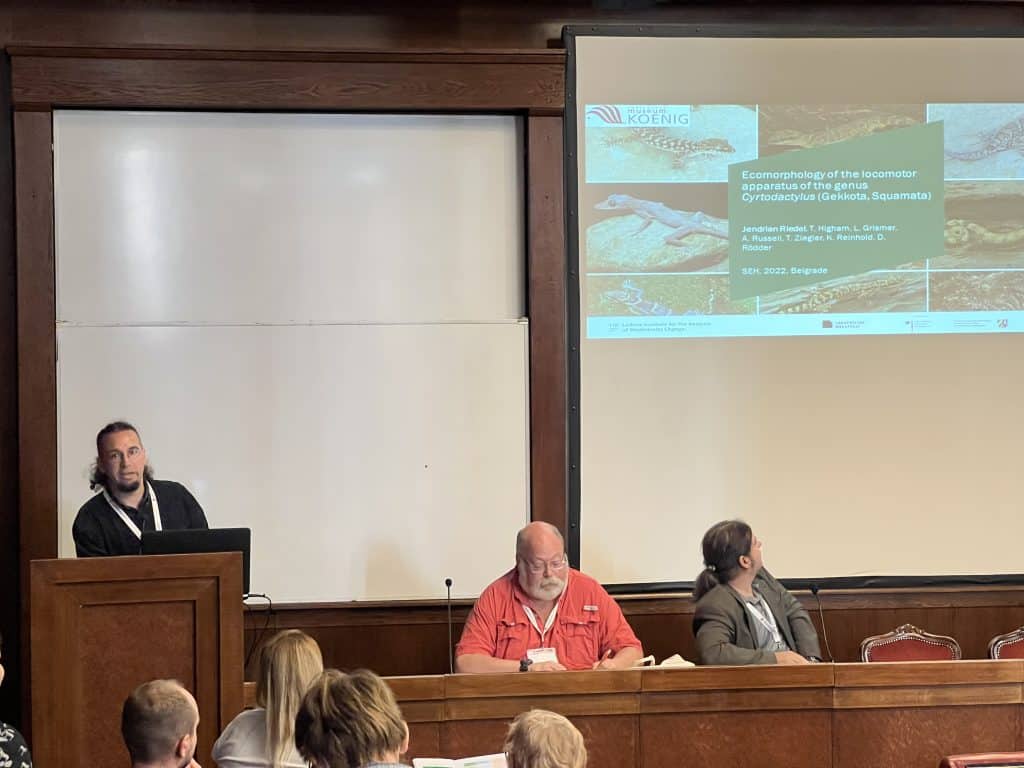
Oral presentation
Ecomorphology of the locomotor apparatus of the genus Cyrtodactylus (Gekkota, Squamata)
Riedel J.1,2,*, Higham T.3, Grismer L.4, Russell A.5, Reinhold K.2, Rödder D.1
1Museum Koenig Bonn – Leibniz Institute for the Analysis of Biodiversity Change, Bonn, Germany
2Department of Evolutionary Biology, Bielefeld University, Bielefeld, Germany
3Department of Evolution, Ecology, and Organismal Biology, University of California, Riverside, CA, USA
4Department of Biology, La Sierra University, Riverside, CA, USA
5Department of Biological Science, University of Calgary, Calgary, Alberta, Canada
*Corresponding author (e-mail): Jendrian Riedel (j.riedel@leibniz.lib.de)
Adaptive radiations, clades of closely related species diversified along one or more morphological and/or ecological niche axes, garner considerable interest from evolutionary biologists. Lizard radiations diversifying along spatial niche space are hypothesised to exhibit distinct changes in body length and relative limb dimensions. One hypothesis predicts that cursorial species have relatively longer hind limbs associated with faster running speeds and relatively shorter forelimbs preventing the latter from interfering with hind limb stride frequency. Accordingly, scansorial species are expected to have relatively shorter limbs, with the fore and hind extremities of more equal length, to promote the maintenance of their center of gravity closer to the substratum. Alternatively, terrestrial species in closed habitats could benefit from relatively shorter limbs because these may reduce their entanglement with more frequently encountered obstacles, whereas scansorial species could benefit from longer limbs which would result in greater limb spans and static stability. Cyrtodactylus is a speciose and ecologically diverse gekkonid genus. From generalist ancestors this clade has repeatedly produced specialists with narrow spatial niches, such as the occupancy of karst formations, caves, granite boulders, and different strata within the arboreal niche. For cave specialists, distinct morphological changes are associated with niche occupancy. The degree of morphological diversification exhibited by the other habitat specialists remains unknown, however. We investigated whether associations exist between limb dimensions and microhabitat use in this genus, to test if either of the opposing hypotheses can be confirmed for this successful radiation. To do so we measured body length and relative limb dimensions in a large sample, including all major lineages, reconstructed the phylomorphospace occupied by the species and tested for associations between spatial niche and limb morphology. We found strong separation between spatial niche groups, although overlap exists particularly among functionally related niches such as those of granite and karst specialists.
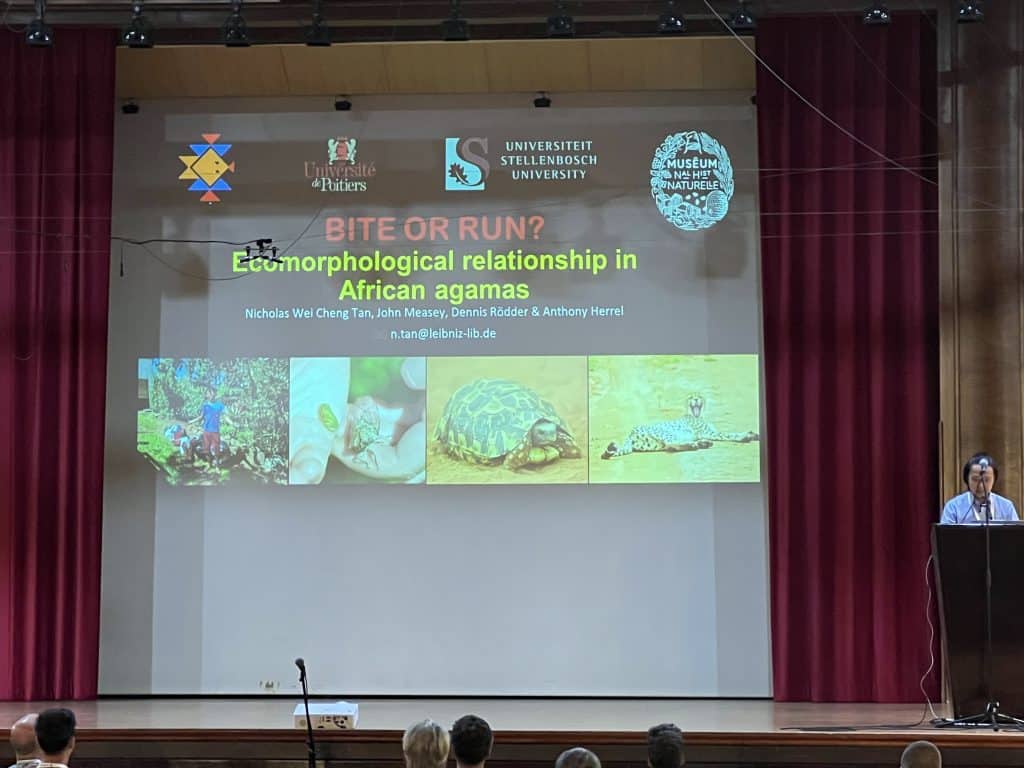
Oral presentation
Bite or run? Ecomorphological relationship in African agamas
Tan N.W.C.1,*, Measey J.2, Vanhooydonck B.3, Herrel A.4
1Herpetology Section, LIB, Museum Koenig, Bonn, Germany
2Centre for Invasion Biology, Department of Botany and Zoology, Stellenbosch University, Stellenbosch, South Africa
3Department of Biology, University of Antwerp, Antwerpen, Belgium
4Département Adaptations du Vivant, UMR 7179 C.N.R.S/M.N.H.N., Bâtiment d’Anatomie Comparée, Paris, France
*Corresponding author (e-mail): Nicholas Wei Cheng Tan (n.tan@leibniz-zfmk.de)
Understanding the relationships between form and function can help us to understand the evolution of phenotypic diversity in different ecological contexts. Many animals display morphological and behavioural adaptations to the habitats in which they live and the resources they exploit. Whole-organism performance traits such as bite force and locomotion are ecologically relevant as they reflect the ability of an organism to include a wider diversity, different or differently sized prey, to escape from predators, or to defend territories. Here, we investigate ecomorphological relationships between diet, morphology, bite force and locomotor performance (sprint speed and endurance) in six species of South African agamids from three habitat types (ground-dwelling, rock-dwelling, and arboreal). Diet analyses showed that ants are a major food source, alongside with active prey such as beetles, wasps and flies. Body and head size are not directly related to diet, although greater in-levers for jaw closing (positively related to bite force) are associated to an increase of hard prey in the diet. Rock-dwelling species have a relatively flatter head than other species, possibly as an adaptation for crevice use. However, even when correcting for jaw length and jaw out-lever length, rock-dwelling species bite harder than ground-dwelling species. Further, endurance capacity of these lizards is correlated with hind limb and toe lengths. Interestingly, however, we demonstrate trade-offs in performance where specialisation towards speed comes at the detriment of endurance. Arboreal species have longer hind limbs, and higher exertion capacity and mean speed. However, for a given hind limb length, they appear to be slower than the other habitat specialists. In sum, our study illustrates the role of morphology in driving functional changes and how habitat use impacts morphology and locomotor performance but not bite force.

Oral presentation
Spatiotemporal patterns of habitat use by the sand lizard (Lacerta agilis Linnaeus, 1758): Effects of climatic seasonality?
Schmitz L.M.1, Clement V.F.1, Edanackaparampil J.1, Ginal P.1, Schluckebier R.1,
Rödder D.1,*
1LIB, Museum Koenig Bonn, Leibniz Institute for the Analysis of Biodiversity Change, Bonn, Germany
*Corresponding author (e-mail): Dennis Rödder (d.roedder@leibniz-lib.de)
The distribution and occurrence of a species in its habitat is inevitably linked with its ecology. To successfully monitor and protect species, it is important to investigate which species-specific factors influence its interactions with the environment. In this study, we focus on patterns in habitat use of the sand lizard (Lacerta agilis). Seasonal as well as sex and age dependent habitat use differences were reported from the species’ range edges. To verify such trends in the core area of its distribution, we analyzed the habitat factors weather, microclimate, microhabitat structures and time dependence, which may have an impact on the behavior of the sand lizard. Using generalized linear models, hypervolumes, density estimations and Chi-squared tests, we found that the movement patterns of the individuals can neither be described by time differences, climatic conditions, or habitat composition, nor do they show habitat or weather-related differences of movement among sexes or age. Here we show that in the case of a population from the core distribution area at the Dellbrücker Heide (Germany), habitat use solely is influenced to a low degree by differences related to ontogeny of the sand lizards and does not depend on any of the other evaluated factors. These results from the core distribution area of the sand lizard show an enormous contrast to findings of populations from peripheral distribution areas, i.e. the United Kingdom, Latvia, Romania, Bulgaria, and the Pyrenees. This implies that seasonal habitats shifts are more extreme at the range edges of L. agilis to compensate deteriorating habitat conditions than in the periphery.
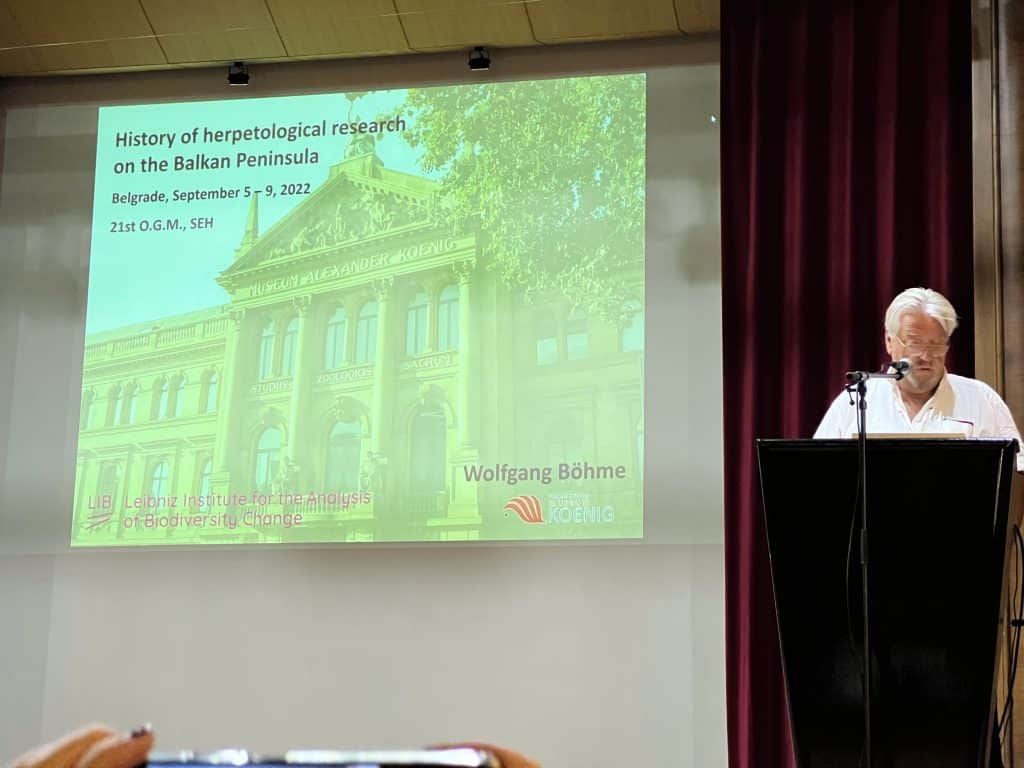
Plenary lecture
History of herpetological research on the Balkan Peninsula
Böhme W.1,*
1Leibniz Institute for the analysis of biodiversity change (LIB) – Museum Koenig, Adenauerallee, Bonn, Germany
*Corresponding author (e-mail): Wolfgang Böhme (w.boehme@leibniz-lib.de)
Southern Europe consists mainly of three large and separate peninsulas shaping the northern coastline of the Mediterranean Sea. Of these, the Iberian peninsula in the west harbours two countries, viz. Portugal and Spain, while the central Apenninian peninsula is made up by just one country, viz. Italy. The Balkan peninsula, in contrast, consists of significantly more countries, including independent states established upon the breakup of former Yugoslavia, then Albania, Bulgaria and Greece. Geographically, as defined by the famous Serbian geographer Jovan Cvijić, also the south of Romania and the European part of Turkey („Turkish Thrace“) have to be added. This historically induced multinational cultural diversity had also great influence on the history of science, including herpetology. The global birthplace and also the name-provider of the term herpetology was Greece and its language, where for instance Aristotle (384-322 BC) wrote an astonishingly exact description of the chameleon while the role of snakes was more a mythological one, nonetheless influential for the entire realm of the Greek-Roman antiquity. But since the origin of modern herpetology by the fundamental work of Carolus Linnaeus, mostly researchers from more northern parts of Europe started to study Balkan herpetology. The lecture will review the main contributors to the herpetology of the Balkan peninsula. They will be discussed countrywise, according to the contemporary geographic delimitations. A focus is laid on the remarkable shift from initially mostly foreign researchers towards autochthonous herpetologists taking care by themselves for the exploration of their respective countries. An overview of the zoogeographical importance of Balkan amphibians and reptiles is given, followed by a summary of important endemic species living in this herpetological diversity hotspot.
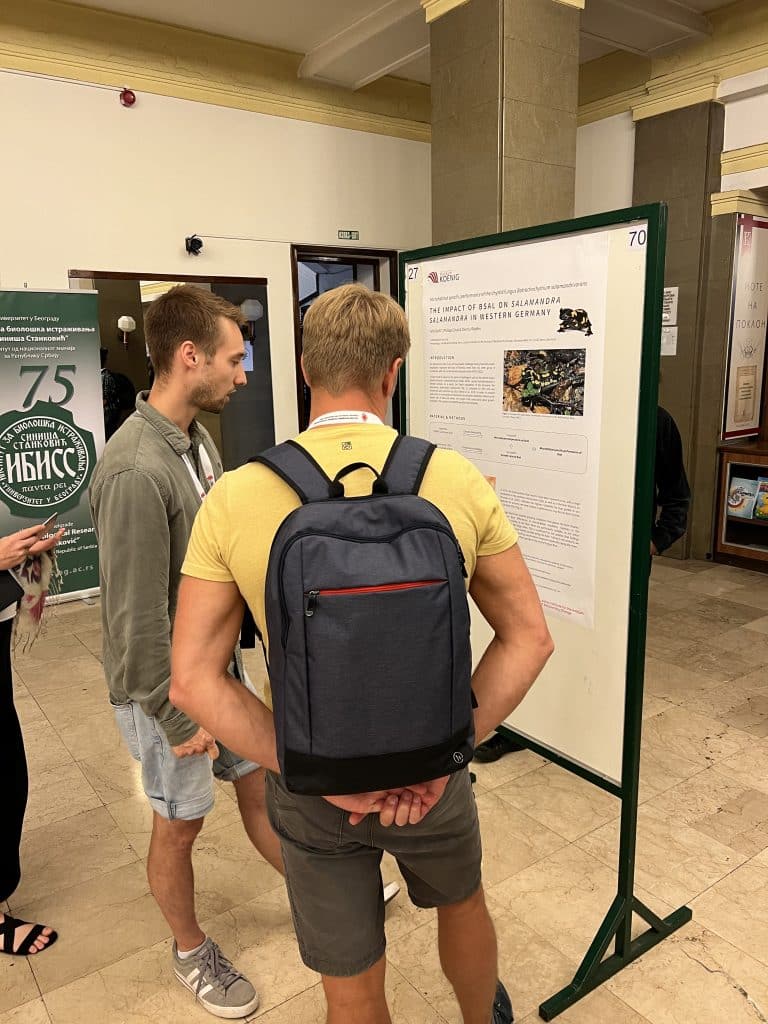
Poster presentation
Microhabitat specific performance of the chytrid fungus Batrachochytrium salamandrivorans and its impact on Salamandra salamandra (Linnaeus, 1758) in western Germany
Deiß F.1,*, Ginal P.1, Rödder D.1
1LIB, Museum Koenig Bonn, Leibniz Institute for the Analysis of Biodiversity Change, Bonn, Germany
*Corresponding author (e-mail): Felix Deiβ (felix@deiss-dv.de)
Nowadays, chytridiomycosis is one of the greatest threats to the diversity of amphibians worldwide. Caused by both, the well-known chytrid fungus Batrachochytrium dendrobatidis (Bd) and the chytrid fungus Batrachochytrium salamandrivorans (Bsal), it plays a decisive role in amphibian declines. The pathogen Bsal, which originally was introduced from Southeast Asia, was discovered in Europe for the first time in 2013. It is particularly harmful to caudate species, as it causes epidermal ulcerations, anorexia and ataxia, which ultimately lead to death in infected animals. As a result it has locally eradicated the formerly common fire salamander Salamandra salamandra in some regions of north-western Europe. In the Netherlands, for example, the fire salamander population has shrunk by 96%. Currently, Germany is the most affected area, with two hotspots: the Ruhr region and the southern Eifel. To simulate the performance of Bsal in its main invasive distribution area, we computed microclimatic surfaces, as temperature has shown to be the most important parameter affecting Bsal. These were simulated based on different habitat types, derived from the most recent Corine Land Cover 2018 maps. Although almost the entire study area would support the growth of Bsal, there are clear differences in the likely performance between different, small-scale environments. Based on these findings, possible Bsal hotspots are identified and recommendations for conservation activities are given
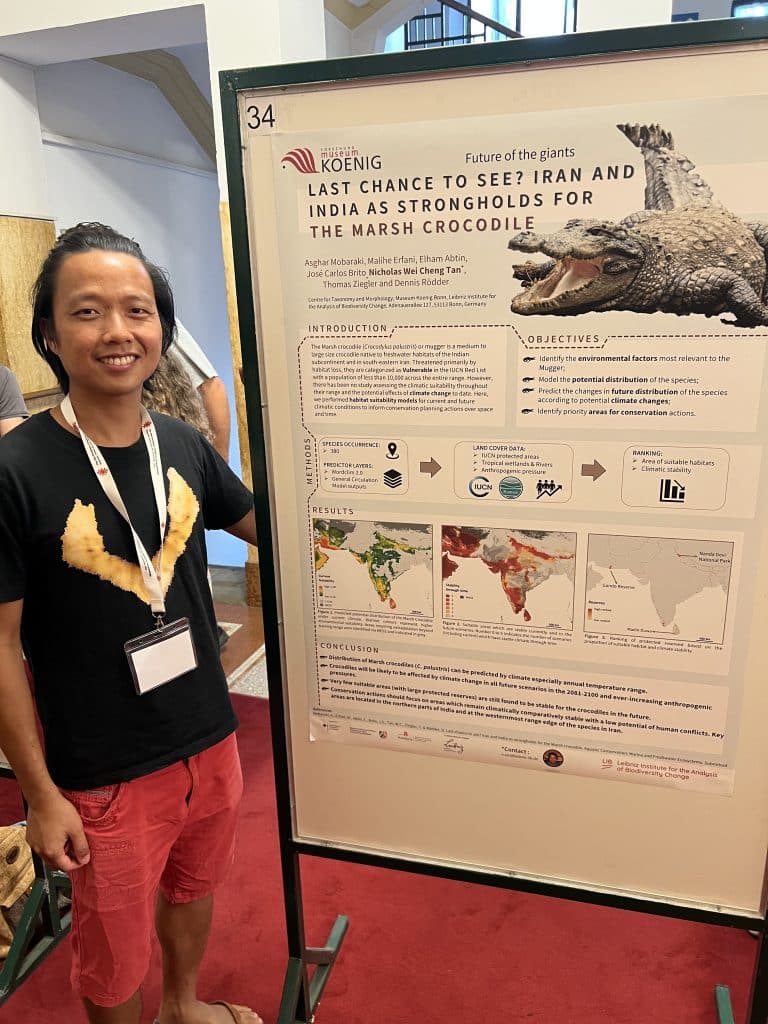
Poster presentation
Last chance to see? Iran and India as strongholds for the Marsh crocodile (Crocodylus palustris)
Mobaraki A.1, Erfani M.2, Abtin E.3, Brito J.C.4,5,6, Tan W.C.7,*, Ziegler T.8, Rödder D.7
1Natural Environment Deputy, Wildlife conservation and management Bureau, Department of Environment, Tehran, Iran
2Department of Environmental Sciences, Faculty of Natural Resources, University of Zabol, Iran
3Natural Environment Division, Department of Environment Office in Sistsan and Baluchestan Province, Zahedan, Iran
4CIBIO, Centro de Investigação em Biodiversidade e Recursos Genéticos, InBIO Laboratório Associado, Campus de Vairão, Universidade do Porto, Portugal
5Departamento de Biologia, Faculdade de Ciências, Universidade do Porto, Portugal
6BIOPOLIS Program in Genomics, Biodiversity and Land Planning, CIBIO, Vairão, Portugal
7Zoologisches Forschungsmuseum Alexander Koenig, Bonn, Germany
8AG Zoologischer Garten Köln, Germany
*Corresponding author (e-mail): Nicholas Wei Cheng Tan (n.tan@leibniz-zfmk.de)
Predictions of future change in species distributions are necessary for defining adequate conservation planning actions over space and time. The Marsh crocodile (Crocodylus palustris) is native to the freshwater habitats of the Indian subcontinent and in south-eastern Iran. Habitat loss is currently the most important factor threatening crocodile dispersal and persistence, and climate change will likely place increasing pressure on populations. This study used ecological niche modelling (Maximum entropy) to predict the current distribution of the species and to project it to future climate conditions. For this purpose, 380 occurrence records were used for model computation and environmental data were obtained from Worldclim 2.0. Averages of eight global circulation model outputs assuming four IPCC6 per story lines in 2081-2100 were used as future ensembles. Furthermore, future possible anthropogenic pressure was quantified using economic growth models. Temperature Annual Range was the climatic variable with highest contribution in the modelling. Presently, the most potential suitable habitats are located in Sri Lanka, south-eastern peninsular of India, tropical moist forest along the west coast of India, border between Nepal and India, and the south coast of Iran and Pakistan. In the future, these suitable habitats are predicted to be further fragmented and to move further inland. Additional threats may arise due to increased human conflicts due to human population growth. Conservation actions should therefore focus on those areas which remain climatically comparatively stable with a low potential of human conflicts. Key areas are located in the northern parts of India and at the westernmost range edge of the species in Iran.
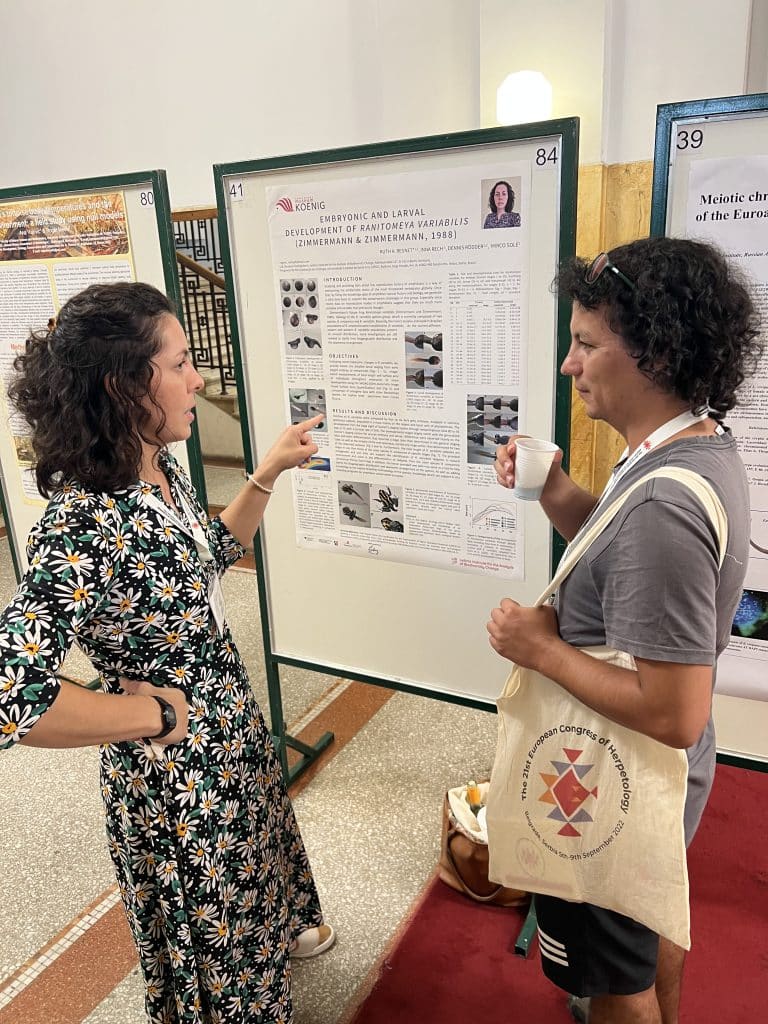
Poster presentation
Captive breeding, embryonic and larval development of the Zimmermann’s poison-frog Ranitomeya variabilis (Zimmermann and Zimmermann, 1988), (Anura: Dendrobatidae)
Regnet R.A.1,2,*, Rech I.1, Rödder D.1,2, Solé M.1,2
1LIB, Museum Koenig Bonn, Leibniz Institute for the Analysis of Biodiversity Change,
Bonn, Germany
2Programa de Pós Graduação em Zoologia, Universidade Estadual de Santa Cruz – (UESC), Salobrinho, Ilhéus, Bahia, Brazil
*Corresponding author (e-mail): Ruth Anastasia Regnet (regnet_ruth@hotmail.com)
Following recent taxonomic changes in Ranitomeya variabilis (Zimmermann and Zimmermann, 1988), we provide herein, for captive bred specimens from French Guiana a description of husbandry in captivity; image-based measurements of total length (TOL) and surface area of individuals throughout embryonic to larval development using the SAISAQ (Semi-Automatic Image based Surface Area Quantification) tool. Furthermore, we provide a detailed larval staging from early staged embryo to metamorph. Clutches of R. variabilis were composed of four to six dark grey eggs, deposited in a mass and wrapped in a colorless gelatinous capsule. Deposition occurs mainly on the largest and basal axils of phytotelma, and less often in photographic film containers, offered as artificial phytotelma. The obtained growth data by SAISAQ showed in comparison with SAISAQ data of other Ranitomeya species a similar growth pattern. However, we noted a remarkable TOL difference between R. variabilis and other Ranitomeya tadpoles, which was also traceable in the ontogenetic data. The developmental stages largely corroborate with the generalized Gosner’s staging system for anuran embryos and larvae. Development from stage eight of Gosner through metamorphosis took 80 to 91 days, with a survival rate of 54%. Differences were observed mainly on the labia and teeth differentiation, which occurred a stage later than expected in the general staging system. As well as, the atrophy of the oral apparatus, which started one stage earlier than expected in two tadpoles. The provided data brings new knowledge about the reproductive biology of this species and supports in situ breeding programs for conservation purposes. We are confident that these data can support the identification of R. variabilis tadpoles in natural environment and the differentiation of tadpoles from the sister species R. amazonica. As well as, providing new data, that can help to clarify the biogeographic distribution and taxonomic arrangement of the species.

Poster presentation
Niche differentiation in the relict, endemic spiny frogs Allopaa hazarensis and Chrysopaa sternosignata
Hofmann S.1,*, Masroor R.2, Litvintchuk S.3, Vershinin V.4, Jablonski D.5
1Museum Koenig Bonn, LIB – Leibniz Institute for the Analysis of Biodiversity Change, Bonn, Germany
2Pakistan Museum of Natural History, Garden Avenue, Shakarparian, Islamabad, Pakistan
3Institute of Cytology, Russian Academy of Sciences, St. Petersburg, Russia
4Institute of Plant and Animal Ecology, Russian Academy of Sciences, Ekaterinburg, Russia
5Comenius University in Bratislava, Bratislava, Slovakia
*Corresponding author (e-mail): Sylvia Hofmann (s.hofmann@leibniz-zfmk.de)
The relict, endemic taxa Allopaa and Chrysopaa are key elements of the Hindu Kush-Himalayan amphibian fauna and share an early-Miocene evolution, making them important proxies for the reconstruction of the Paleogene history of the Tibetan Plateau and the evaluation of respective modern scenarios of the development of the HTO. However, there is no much information on the distribution of these taxa. We here provide species distribution models for both taxa and test the hypotheses of niche differentiation. The average performance of our MaxEnt models was considered significantly better than random. They show, that both taxa are geographically separated with an allopatric distribution pattern, and that BIO8 (mean temperature of wettest quarter) was most important to the models. Further, our findings provide strong support for distinct niche divergence among C. sternosignata and A. hazarensis. The study contributes to the knowledge about the distribution of these species and provide basic information for guiding future management of them.
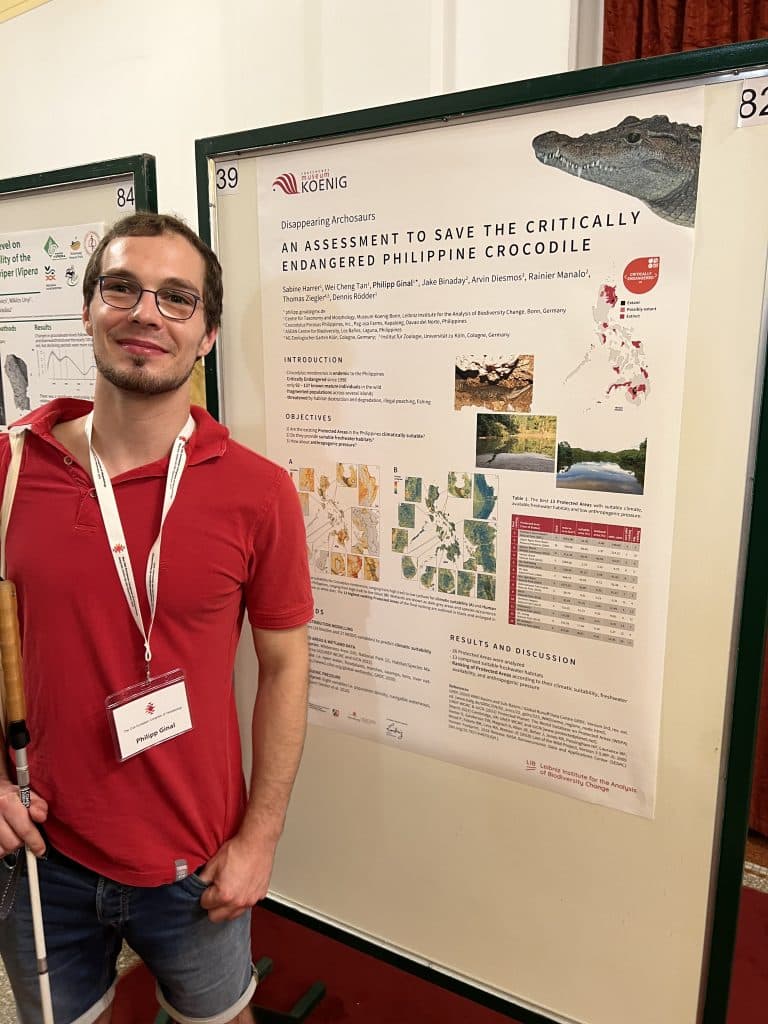
Poster presentation
Disappearing archosaurs – an assessment of established protected areas in the Philippines to save the Critically Endangered and endemic philippine crocodile Crocodylus mindorensis
Harrer S.1, Tan W.C.1, Ginal P.1,*, Binaday J.1, Diesmos A.1, Manalo R.1, Ziegler T.2,3,
Rödder D.1
1LIB, Museum Koenig Bonn, Bonn, Germany
2AG Zoologischer Garten Köln, Köln, Germany
3Institut für Zoologie, Universität zu Köln, Köln, Germany
*Corresponding author (e-mail): Philipp Ginal (philipp.ginal@gmx.de)
Once distributed all over the Philippines, the endemic Philippine Crocodile Crocodylus mindorensis is threatened with extinction. Less than 140 mature individuals live in the wild. Human activities like fishing and illegal poaching, as well as land-use change and habitat conversion cause a continuing threat for the remaining populations. Therefore, designated protected areas were evaluated with species distribution models (SDMs) for improved future conservation efforts. For this purpose, the existing IUCN-reserves were analysed for climatical suitability (combining bioclimatic and remote sensing variables), wetland occurrences and the human footprint index by using MaxEnt and QGIS. Based on topical species records, our final SDM-model showed high performance and revealed the climatically most suitable areas on Luzon and Mindanao. However, only small parts of the climatically optimal area and suitable wetlands are currently covered by reserves. Case in addition, none of the species’ records is located within a protected area. The anthropogenic pressures in the reserves were diverse and varied between a low and moderate level. Most of the records are found in areas with a moderate to medium human footprint. Considering the three criteria, only ‘Northern Sierra Natural Park’, ‘Agusan Marsh Wildlife Sanctuary’ and ‘Upper Agno River Basin Resource Reserve’ revealed to be suitable conservation areas for C. mindorensis. The other reserves seemed to be unsuitable, whereas suitable areas outside protected areas are highly recommended for further surveys. Therefore, the current network of existing protected areas needs significant improvement to provide well-suited and long-term protection for C. mindorensis. More surveys are also necessary to find hidden, so far overlooked populations and verify C. mindorensis tolerance level for human footprint.


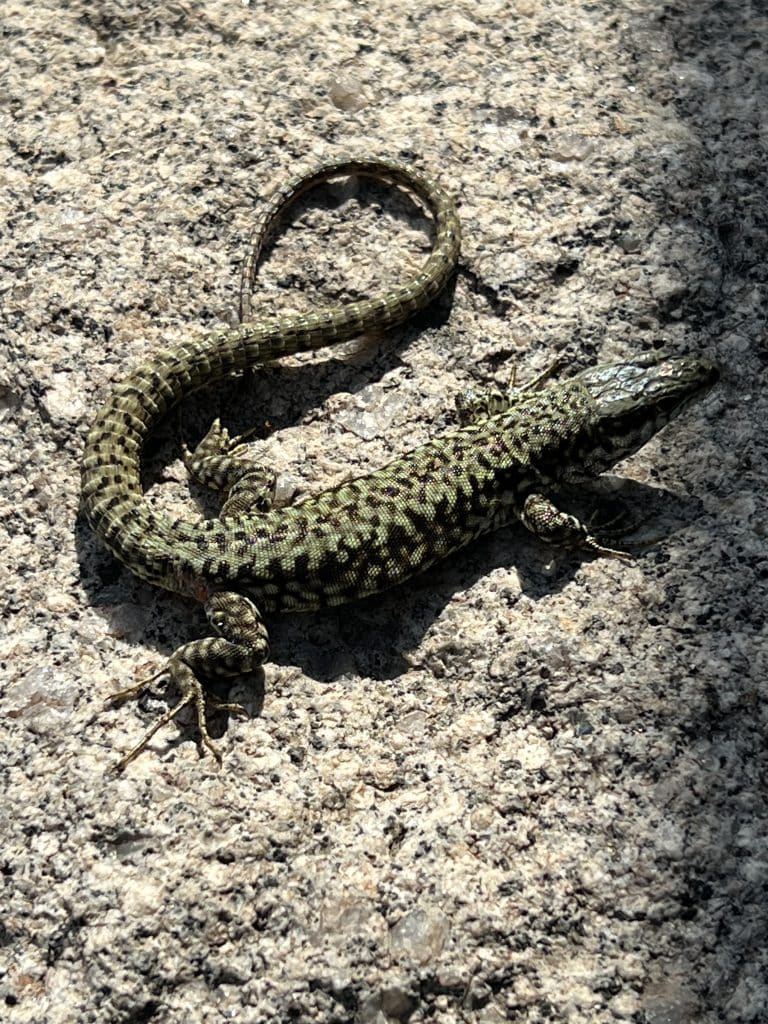













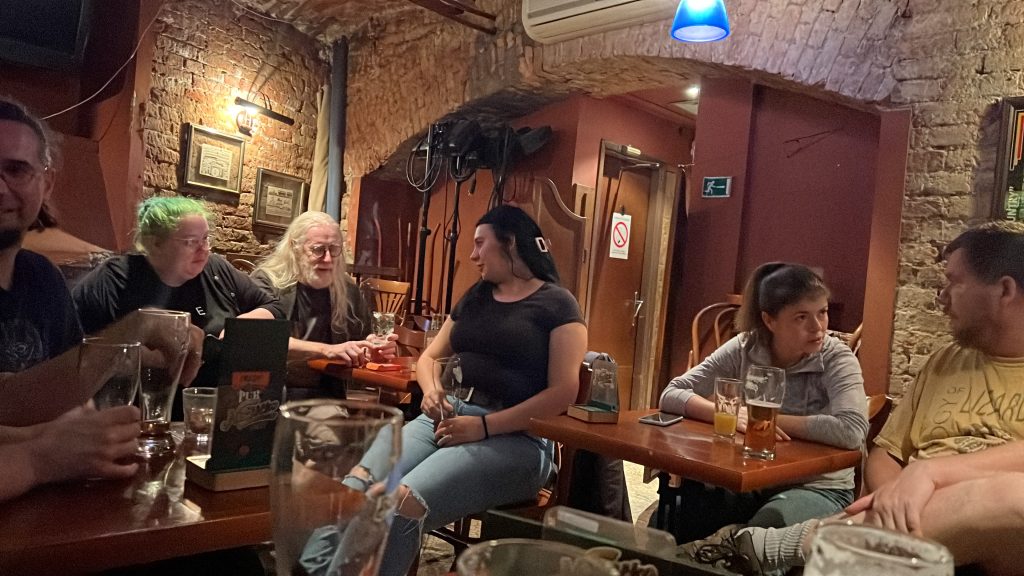



High from the air, drones help survey sand lizard habitat
Understanding the space use and habitat needs of animals is essential for effective species conservation. Small animals use small structures that are difficult to monitor. LIB researchers have now used drones in a study to depict these small structures in high-resolution habitat maps. The research team was able to show how important low blackberry bushes are for sand lizards in the Dellbrücker Heide in Cologne. The drone method can find application in nature conservation and landscape planning.
“What is their neighborhood or quarter for people is their home range for wild animals,” explains Dr. Dennis Rödder, curator of Herpetology section at the Leibniz Institute for the Analysis of Biodiversity Change (LIB) in Bonn. This area is familiar to them, it’s where they move around and it fulfills their ecological needs in their daily lives, from food to shelter. After exploring the surrounding area, the animals usually return to this area. Therefore, mapping the habitat in the home range can provide valuable insights into the spatial and structural needs of wildlife. Understanding these requirements is becoming increasingly important as human impacts alter landscapes. “We hope that our work will not only remain theoretical but will also find application in conservation and landscape planning,” explains Vic Clement, PhD student at the LIB.
Sand lizards and their home range are small, as are the structures in their habitat. High-resolution maps depicting individual bushes, grass, sand or trees are therefore required for monitoring. Drones provide a remedy here: from a low altitude, they take high-resolution images of the area so that individual structures can be easily distinguished. The LIB researchers now merged the observed home ranges of the animals studied with the detailed map and were thus able to examine the structure of the habitat within the boundaries of the home range and compare it with the surrounding area. Clement, Schluckebier, and Rödder demonstrated that sand lizards in the Dellbrücker Heide favor low brambles, while avoiding open sandy areas and high vegetation. Preferences for grass and other low bushes, on the other hand, vary from animal to animal.
“The sand lizard as a cultural successor is often a victim of disturbance, destruction, or fragmentation of its habitats by human activities. Compensatory and protective management could now be better formulated with our data,” also hopes Rieke Schluckebier, Master’s candidate in the Herpetology section of the LIB. In recent years, drones have increasingly proven to be a useful tool for answering ecological questions. This time-efficient method of surveying habitat structures can be of great benefit in the management of protected areas.
Source
Clement, V.F., R. Schluckebier, & D. Rödder (2022). About lizards and unmanned aerial vehicles: assessing home range and habitat selection in Lacerta agilis. Salamandra, 58: 24–42.
https://www.salamandra-journal.com/index.php/home/contents/2069-clement-v-f-r-schluckebier-d-roedder
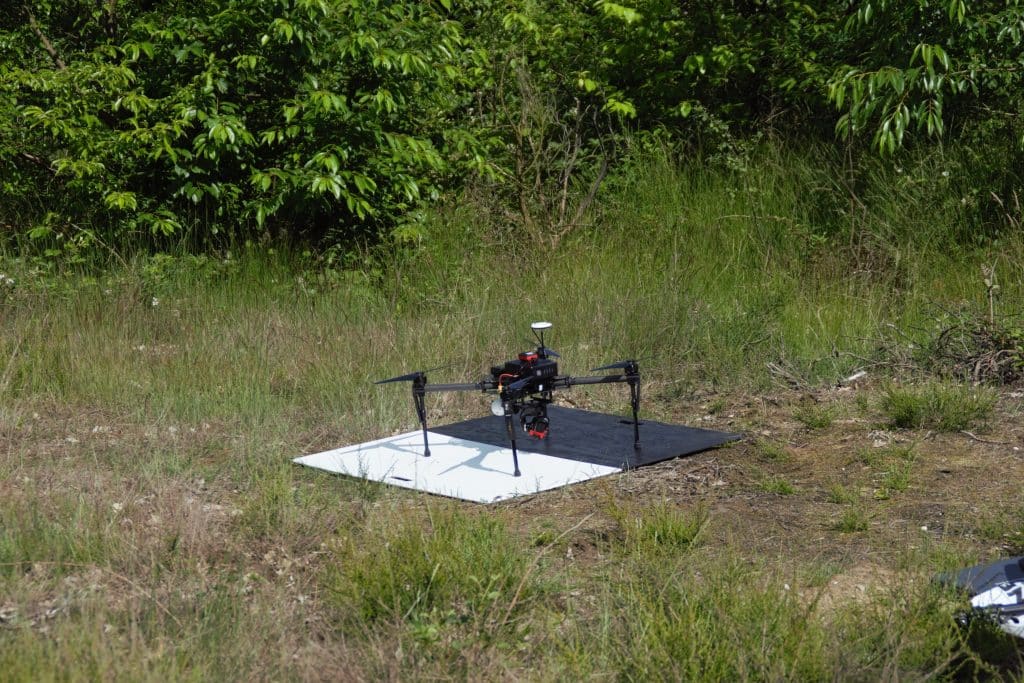

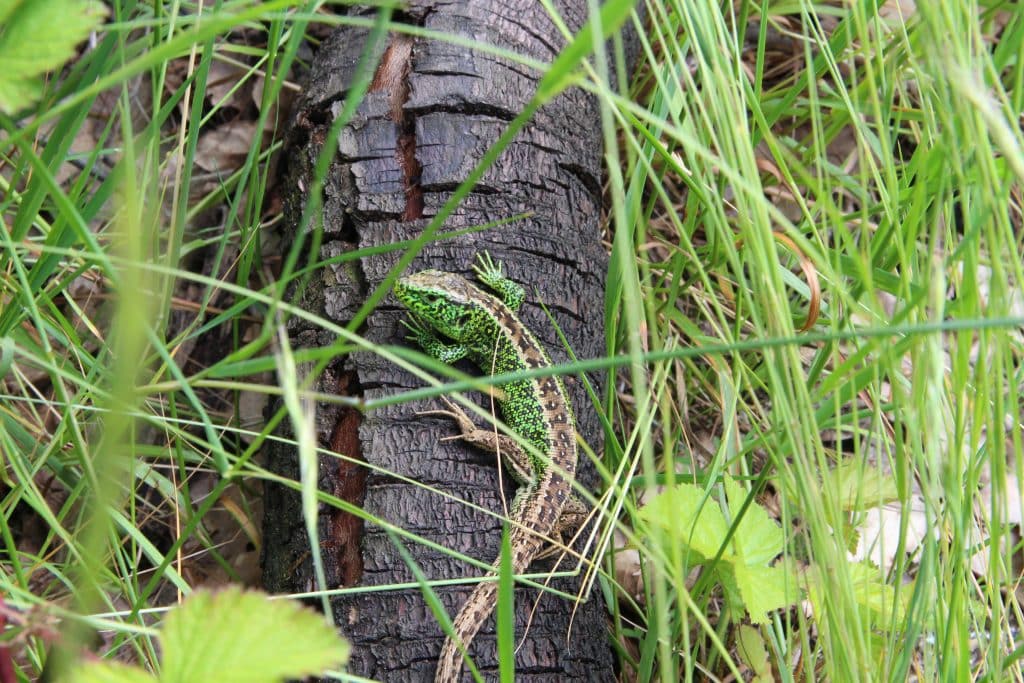
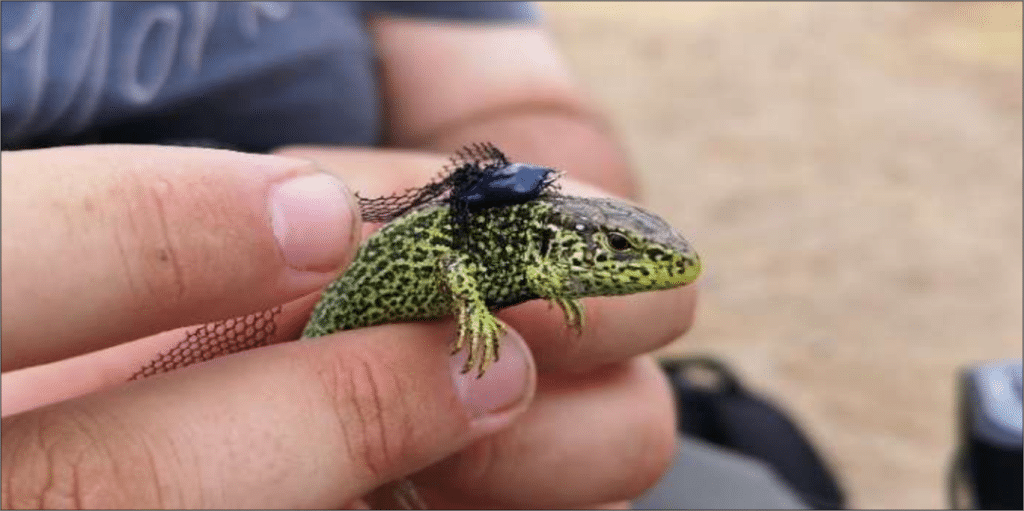


On niches and ranges – how do animals respond to climate change?
…unfortunately only in german:
AUS UNSERER VORTRAGSREIHE DES KÖLNER ZOOS- gemütlich auf der heimischen Couch genießen: Di., 08.02.2022, 19:30 Uhr: „Von Nischen und Arealen – Wie reagieren Tiere auf den Klimawandel?“ Dr. Dennis Rödder, Forschungs-Museum Koenig – Offizielle Seite
Der menschengemachte Klimawandel hat bereits heute einen weltweit messbaren Einfluss auf die Biodiversität. Mögliche Effekte zeigen sich auf allen Ebenen, von zeitlichen Verschiebungen in der Phänologie der Arten bis hin zu Veränderungen in ihren Verbreitungsgebieten. Der Vortrag gibt einen Überblick darüber, was wir bislang beobachten konnten und was wir in Zukunft erwarten.



